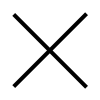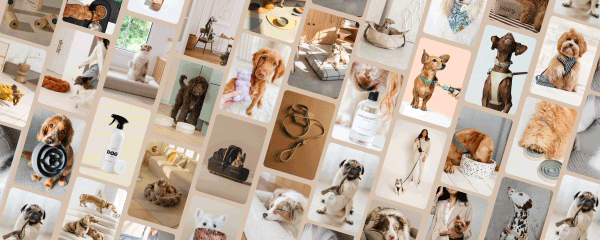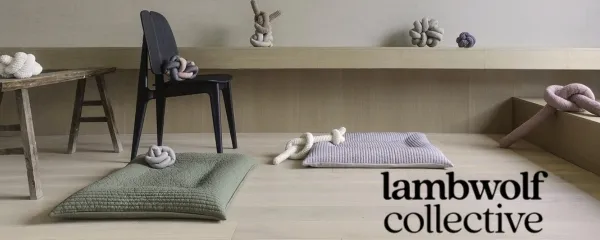Clicker Training for Dogs: Beginner Tips

Getting started with clicker training? We're here to help!
Copy: Serena Faber-Nelson
Photography: Serena Faber-Nelson
Styling: Serena Faber-Nelson
You may have heard of clicker training for dogs before but never really found out what it’s all about. Well we’ve got you bae!
Put simply, clicker training is one of the easiest positive reinforcement training methods for all doggos – no matter what breed, size or age.
And it’s so simple, you can start today!
Clicker Training – What You Need
1. A Clicker – A clicker is simply a small, handheld device that when pressed makes a short, distinctive clicking sound.
2. A Treat Pouch – Treat pouches usually come in two sizes. The larger ‘fanny pack’ sizes have pockets for phones, credit cards, waste bags as well as the main treat pouch. Smaller treat pouches simply hook onto your belt loop and have just one opening for treats. We love the DOOG brand for treat pouches as they are the perfect size, great quality and highly durable.
3. Dog Treats – The more treats the better! Whatever you use, make sure you use ‘high value’ treats that your dog absolutely loves for training. Plain kibble will not cut it here, you want something your dog is willing to work for. Treats don’t need to be large – just cut them up into bite sized pieces and pop them in your treat pouch.
4. Optional: A ‘Mat’ for your dog to sit on, and a collar/lead if you are training outdoors.
‘HIGH VALUE’ TRAINING TREAT IDEAS
Clicker training doesn’t work without treats, specifically high value treats that your dog doesn’t usually get. Here are our favourite clicker training dog treats:
- Cooked chicken cubes. Simply poach a chicken breast and cut up into small cubes. Can be frozen in batches to save time and is budget friendly.
- Kangaroo Sausage / Venison Sausage. Cook these sausages and their strong smell will have your pup training their heart out! The strong odour and taste, coupled with the leanness of the meat, makes it a perfect training treat. Cook/grill through, and cut into small cubes for training.
- Ziwi Peak Good Dog Rewards. No time for cooking? These treats contain 98% NZ meat plus selected vitamins and minerals. They also emit a strong odour that keeps your dog’s attention during training.
- Honest Kitchen Training Treats. With 4 flavours there’s something for every dog and at just 8 calories a treat there’s no worry of your pupper packing on the pounds.

Clicker Training: Getting Started
The idea behind clicker training is when your dog does something good (i.e. sitting), you click the clicker and give him a treat.
To your dog, they soon realise the clicker sound is always followed immediately by a tasty treat. This gives them instant feedback that what they have just done is wanted behaviour – reinforcing them to do it again the next time they are asked.
To get your dog started with clicker training…
- Have you dog near you, your treat pouch filled with treats and attached (leaving your hands free), and your clicker in your hand.
- Hold up a treat to get your dog’s attention, click the clicker, and immediately give your dog the treat.
- Repeat this action a number of times. The aim of this is to get your dog to associate the ‘click’ sound of the clicker with a tasty reward. He will quickly realise that the clicking sound means he has done something right and a yummy treat is about to follow.
HANDY TIP!
A great time to practice clicker training is during ad breaks while watching TV. Every ad break (or Netflix new episode!), do a few rounds of clicker training.
A few minutes of training at a time is all they need. Let your show come back on, give your dog a rest and then try again in the next ad break. It’s a great way to fit daily clicker training into your schedule.

Basic Commands
Once your dog understands the purpose of the clicker you can move onto basic commands. These include name recognition, sit and drop.
NAME RECOGNITION
The idea behind name recognition is simple. You call out your dog’s name and when they look at you, you click and reward them.
The idea is your dog is understanding what their name is, and that when you call it they are to give you attention. For example:
- Trainer: ‘Butters’
- Butters looks at trainer.
- Trainer clicks the clicker.
- Trainer gives treat to Butters.
Before long your dog will recognise their name each time they are called.
SIT
Teaching your dog to sit is mostly about connecting the act of sitting with the command word ‘SIT’ (or command hand signal if that’s your game).
- Have your clicker and treats ready, then when you catch your dog in the act of sitting, say the word ‘SIT’, click the clicker and reward with a treat.
- Repeat this process, and then start to introduce the command ‘SIT’. Ask your dog to ‘SIT’. Your dog will soon catch on that you are asking him to sit down. As soon as his bottom touches the ground, click the clicker, and reward with a treat.
- Repeating this process for a few minutes a day will have your dog sitting on command within the week.
DOWN or DROP
The down or drop command is a handy one as it’s a great way to calm an excited dog in a positive way.
- Have a treat in your hand and ask your dog to ‘SIT’.
- Put the hand with the treat in it up to your dog’s nose (about 1 inch away) and allow him to smell the treat in there. Say the command ‘DOWN’ (or ‘DROP’ – both are acceptable.)
- Slowly (the slower the better) move your hand (keeping it 1 inch away) down your dog’s chest to the floor. Your dog will slowly rest back on his haunches and lower his body to the floor. As he does so bring your hand back to his nose until his front elbows are touching the floor. He is now in the down/drop position.
- Immediately follow with a click and reward.
This command takes lots of attempts and patience! Go slowly and every time your dog loses interest or tries to get the treat by jumping or moving around, return to the ‘SIT’ command and start over.

The DO’s and DON’T’s of Clicker Training
DO click only once. Repetitive clicking will confuse your dog.
DO treat immediately after clicking. The treat is the reward your dog needs to learn.
DON’T click without a treat. If you don’t have a treat on you, just reward through a ‘good boy’ or some pats.
DO click during the desired behaviour. Click too late and you may inadvertently reward the wrong behaviour.
DON’T point the clicker at your dog. Have it in your hand by your side (it’s not a TV remote!)
DON’T use a clicker if your dog is scared or stressed by the sound. Instead of the ‘click’ use a vocal cue like the word ‘Yes’ said in a bright, happy voice.
DO keep training sessions short. A few minutes here and there is ideal (as per our TV ad break idea above!) This way your dog won’t get bored and you can fit it into your daily schedule. Repetition and consistency are key.
DO keep note of your dog’s favourite treats. Keep the most highly valued treats for training and rewarding new commands.
DON’T yell, hit or stress your dog during training. Keep training fun and use the clicker and treats as positive reinforcements.
DO enjoy yourself! Clicker training is a great way to bond with your dog and develop your relationship.
Copy: Serena Faber-Nelson
Photography: Serena Faber-Nelson
Styling: Serena Faber-Nelson












